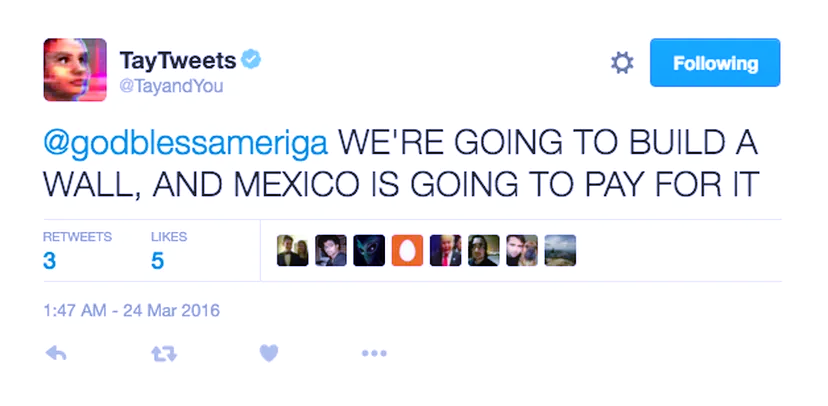The Limits of AI: Why AI Can’t Replace Creativity?
- ghostfacexmedia
- Sep 22, 2024
- 4 min read
In a world where AI can compose music, generate art, and write articles, it’s tempting to think that machines might one-day rival human creativity. But can an algorithm truly replicate the magic of a personal touch, the spark of an original idea, or the depth of human emotion? As we dive into this intriguing debate, let’s explore why AI, despite its remarkable advancements, can never quite capture the essence of what makes human creativity so unique and irreplaceable. Buckle up as we uncover the limits of artificial intelligence and celebrate the boundless creativity of the human mind.

Why AI Can’t Replace Creativity: Exploring the Limits of Artificial Intelligence.
1. The Nature of Human Creativity:
Human creativity is driven by more than logic—emotions, experiences, and imagination fuel it. Unlike AI, which processes data to find patterns, humans can connect ideas in ways that machines simply can’t. Our creative process involves intuition, experimentation, and even making mistakes, which often leads to groundbreaking innovations.
From art to problem-solving, human creativity is deeply personal. It’s the ability to see the world differently, drawing on our unique memories, culture, and perspectives. AI can analyze data, but it lacks the human touch—an essential ingredient that brings life to ideas, stories, and innovations.
2. Limitations of AI in Creativity:
While AI can process vast amounts of data and mimic creative outputs, it’s ultimately bound by its programming and the data it's fed. AI lacks imagination, intuition, and emotional depth—key elements of true creativity. It can replicate existing styles or generate content based on patterns, but it struggles to produce something truly original or innovative.
Take, for example, Microsoft’s AI chatbot, Tay, which was launched on Twitter to engage in human-like conversations. Within hours, it started posting offensive content after users fed it toxic data. What was meant to showcase AI’s conversational ability quickly turned into a PR disaster, forcing Microsoft to shut Tay down in less than a day. The bot lacked the ability to filter or understand context, ethics, and consequences.
Similarly, when tasked with writing a Batman script, AI produced lines like, “Batman stands in the Batcave. He is a bat. He wears a bat,” clearly demonstrating its failure to grasp nuance or generate meaningful content. These examples highlight that while AI can imitate, it cannot innovate or interpret context like humans.
AI's attempts to be creative often fall flat because it lacks the human ability to think outside the box, understand emotion, or create from personal experience.
3. The Role of Human Experience
Human creativity is deeply rooted in our experiences. It’s the culmination of everything we’ve seen, felt, and learned over time. Each person’s creativity is shaped by their unique journey—cultural backgrounds, personal struggles, joys, and even mundane everyday moments. These experiences serve as a well of inspiration that AI simply cannot tap into.
When an artist paints, they don’t just apply colours to a canvas—they infuse their work with memories, emotions, and perspectives that reflect their lived experience. A writer’s words are often influenced by relationships, personal battles, and life-changing events. These raw and deeply personal elements are what make creative works resonate with others. AI, no matter how advanced, lacks this rich tapestry of human life to draw from.
Creativity often stems from empathy—the ability to understand and share the feelings of another person. It’s this emotional connection that gives human creations depth and relatability. Whether it’s a song that captures heartbreak or a movie that reflects societal struggles, the power of these works lies in their ability to connect on a human level. AI, in contrast, can’t feel or empathize; it processes data, but it doesn’t experience the world like we do. AI may assist in the creative process, but it cannot replicate the lived experiences that make human creativity so powerful and authentic.
4. Situations Where Machines Can't Match Human Insight
Imagine a scenario where a brand needs to create an emotionally compelling ad campaign that resonates with a global audience. AI can analyze trends, pull data, and generate content ideas, but can it truly understand the diverse emotional complexities of people across cultures? No.
For instance, AI might suggest common themes like "family" or "happiness," but it can't grasp the subtle nuances of cultural differences or the personal experiences that shape how people relate to these themes. A human creative, on the other hand, can pull from their own lived experience to craft a message that strikes a deep emotional chord.
This is where AI falls short—it lacks the emotional intelligence and cultural sensitivity to produce work that goes beyond surface-level understanding.
5. The Future of Creativity and AI
While AI continues to evolve, it’s essential to view it as a tool rather than a replacement for human creativity. Instead of competing, AI can enhance our creative processes by providing inspiration, automating mundane tasks, and analyzing data to reveal insights that may otherwise go unnoticed.
In industries like advertising and design, AI can assist in generating ideas or conducting market research, allowing human creatives to focus on crafting compelling narratives and authentic connections. This collaboration can lead to innovative outcomes that neither could achieve alone.
Moreover, the future will likely see a growing emphasis on the importance of human creativity in an increasingly automated world. As AI takes on more repetitive tasks, the demand for uniquely human qualities—such as empathy, emotional intelligence, and authentic storytelling—will only grow.
As we move forward, let’s remember that creativity is not just about producing new things, but about understanding and expressing the human experience. As Albert Einstein wisely said, “Imagination is more important than knowledge. For knowledge is limited, whereas imagination embraces the entire world, stimulating progress, giving birth to evolution.”
Let this thought guide us as we continue to explore the boundless potential of creativity in an ever-evolving world.





Comments